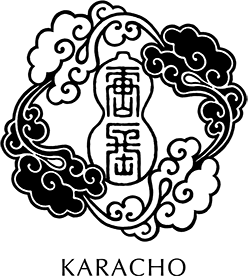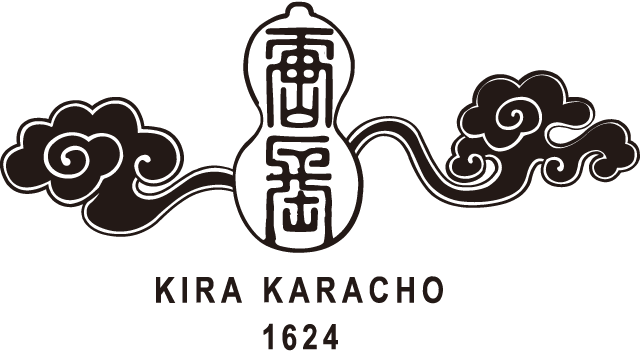Shrines, Temples,
Restoration of Cultural Assets, Etc.
Episode
Temples and Shrines of the Karashi Artist Toto Akihiko
Yogen-in Temple, Go’o Shrine, Hokinji Temple of the Myoshinji School of Rinzai Zen Buddhism, Shosonji Temple of the Honganji School of Shin Buddhism, Higashiyama Jisho-ji Temple (Ginkakuji Temple), Daizenin Temple of the Shin Buddhism Koji School, Busshoji Temple of the Honganji School of Shin Buddhism, Yogenin Temple of Sokokuji, Juryoji Temple of the Nichiren School, Chudoji Temple of the Nichiren School, Saihoji Temple of the Jodo School, Myoho-in Head Temple of the Tendai School Sanjusangendo Monzeki, Tokuhoji Temple of the Honganji School of Shin Buddhism, Chisan School of Shingon Buddhism Enmeiin Temple, Mt. Shigi Daihonzan Gyokuzoin Temple, Otani School of Shin Buddhism Shofukuji Temple, Nichiren School Jisso-in Temple, Jodo Shin Honganji Mt. Kashiwara Ryusen Temple, scenic spot Murinan, Myokoji Temple of the Nichiren School, Soto School Entsuzan Kozenji Temple, Jonen-ji Temple of the Jodo Shinshu Honganji School, Ganshoji Temple of Jodo Shinshu Honganji School, Jodo Shinshu Honganji School Sairenji Temple, Myoshinji School of Rinzai Zen Buddhism, Mt. Umaya Horinji Temple of Jodo Shinshu Honganji School, Gyokuryuzan Hoshoji Temple of the Soto School of Buddhism
Shunko-in, Myoshin-ji Temple
Nikyokyu isso (two-fold) folding screen / Ko-un ni ryusui (Undulating clouds and flowing water)
The head priest from Shunko-in of Myoshin-ji Temple came to ask for a folding screen to be placed in his zazen meditation space.
It was quite an interesting and stimulating first meeting. During the COVID-19 pandemic, we talked a lot about our thoughts, the future of society, matters of the heart, faith, beauty, and so on.
I was later contacted by him, pleased to read “I really enjoyed my conversation with Toto, not to mention the karakami. Words like ‘latent,’ ‘chaos,’ and ‘heart’ resonated with me so much. Even now, the conversation we had is still spinning around in my head. It is truly a flurry of tacit knowledge.” I laughed to myself privately, thinking that I would have a long relationship with this priest.
For me, being with karakami on a daily basis is like practicing zazen. The act of dying dozens or hundreds of sheets and transferring the power of the pattern from the woodblocks to the paper hones both mind and body, and you turn inward… eventually, a moment of nothingness arrives.
That, for me, is a time of pure sublimated bliss.
Karakami, which coexists with zazen, is something that is captured by the mind’s eye, and I offered a worldview that depicts shades of white on white. The priest commented “I feel as if something has been purified by running water and the power of both the dragon and the dragon turtle.”
It’s not there, but it is there… sort of.
It is truly karakami with a sense of presence.
────── Karakami Artist Toto Akihiko
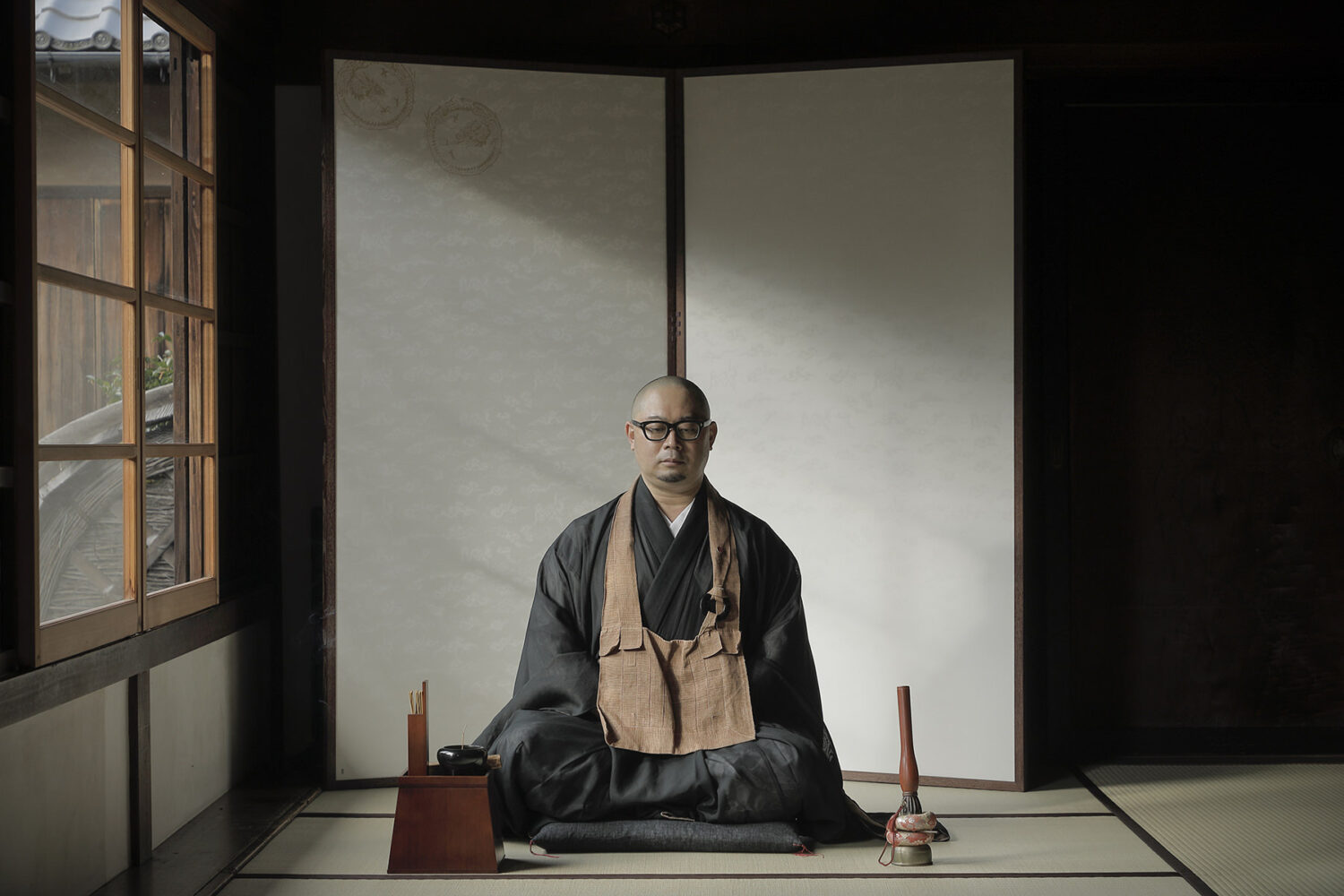
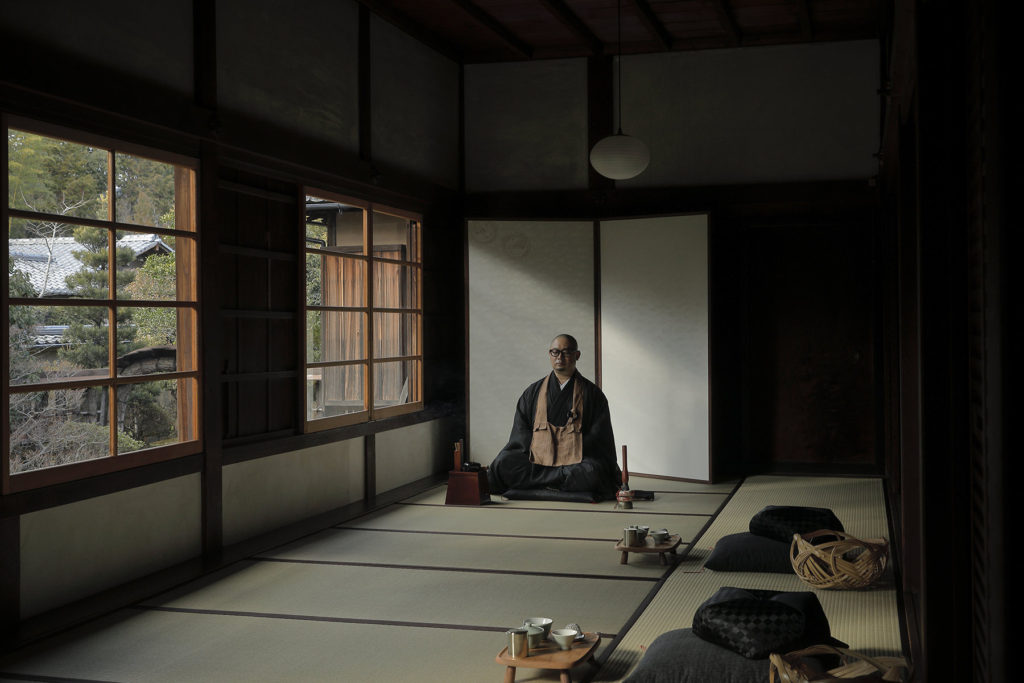
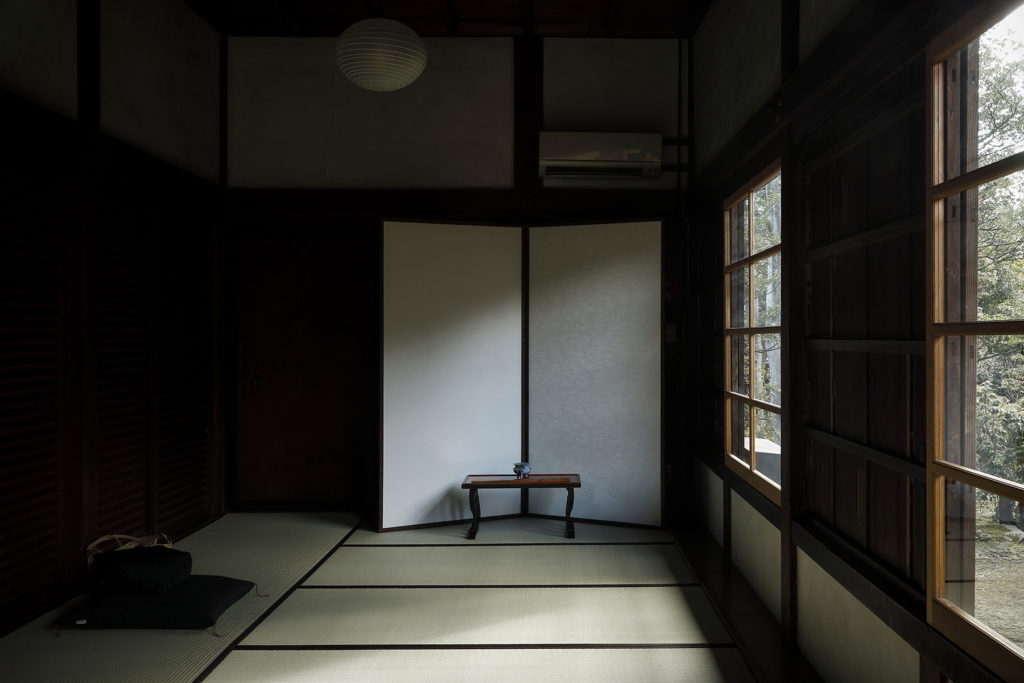
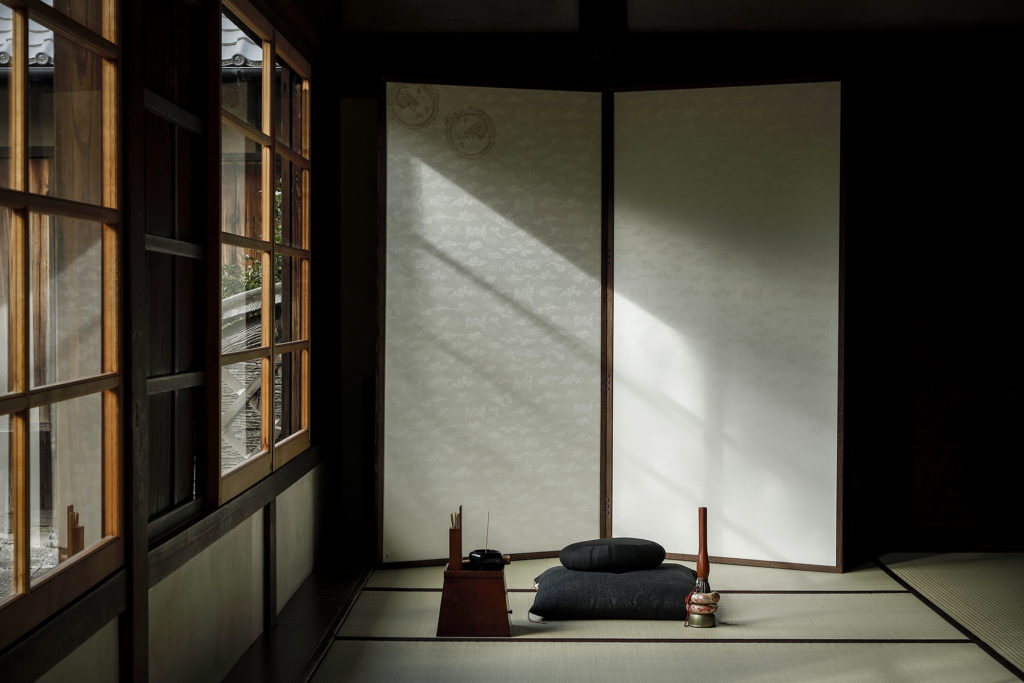
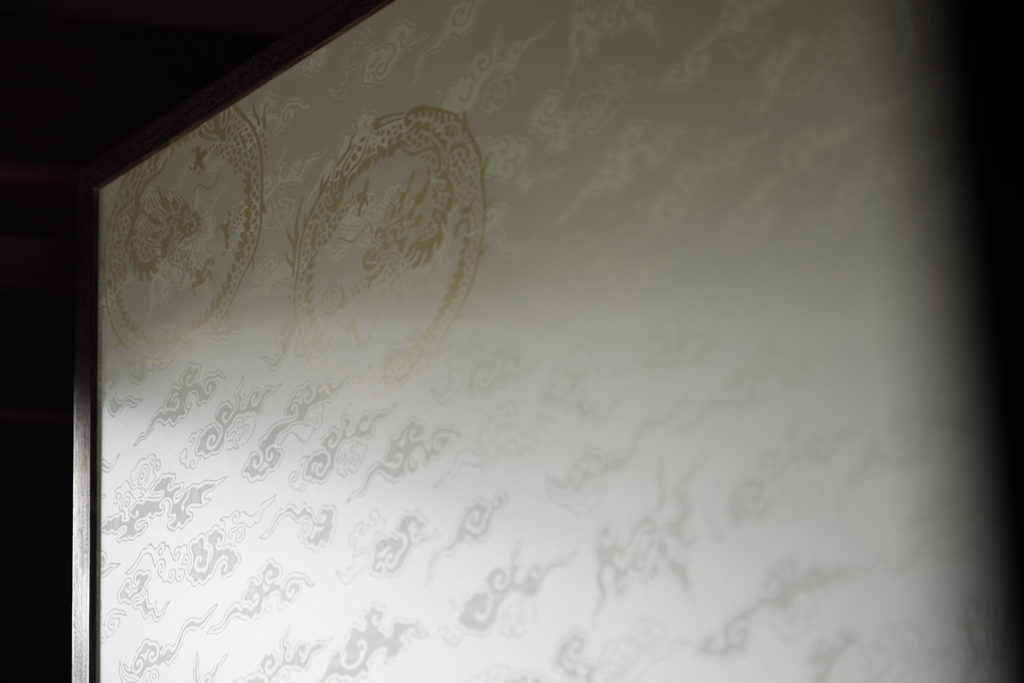
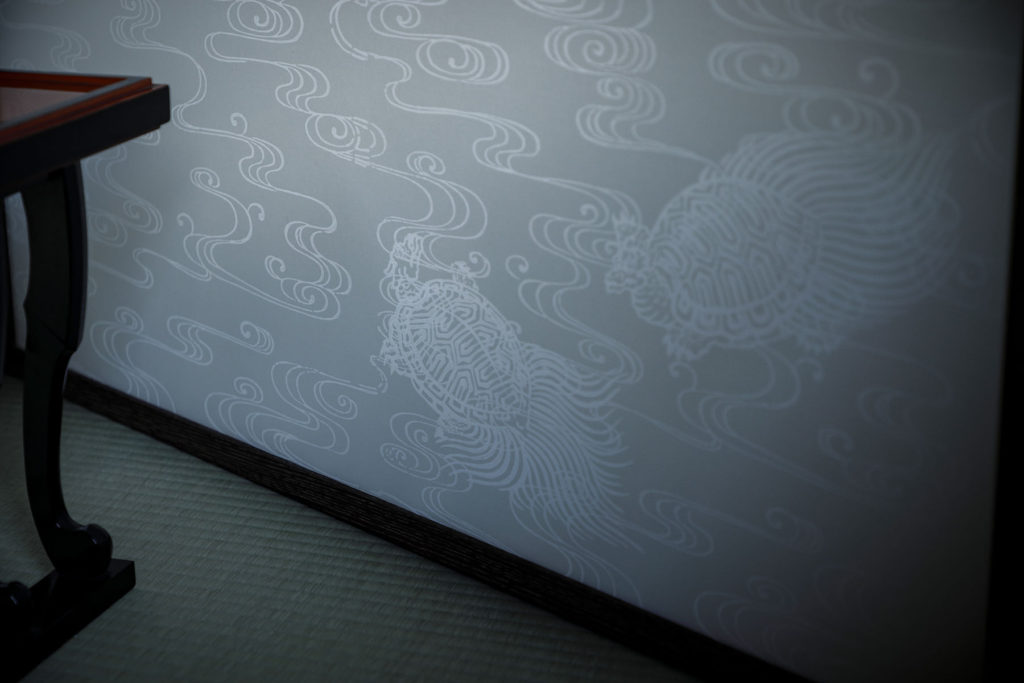
Dedication of karakami to Murinan
Scenic spot Murinan was created by Yamagata Aritomo, an elder statesman in the Meiji Period (1868-1912), and donated to Kyoto City in the Showa period (1926-1989). It is a valuable cultural asset designated as a national place of scenic beauty. The garden is meticulously cared for, but the building was so damaged and decayed that the mayor of Kyoto was wondering what he and I, being citizens of Kyoto, could do to rectify the situation.
During the on-site visit, we decided to donate replacements for all 16 items that were severely damaged. In addition to donating karakami, we also pledged to handle the preparation of surfaces and cover all of the framing costs.
I accepted this job with the intention of preserving a key cultural asset while providing visitors from Japan and abroad the opportunity to enjoy the value and charm of genuine karakami paper and to build a bridge between the culture of Kyoto and the future.
Murinan is the place where the historic meeting to decide the future of Japanese diplomacy was held on April 21, 1903, just before the Russo-Japanese War. The meeting was attended by Ito Hirobumi, Komura Jutaro, Taro Katsura, and Yamagata Aritomo of Murinan. What were Aritomo’s thoughts when he worked to create this tranquil and peaceful strolling garden, amid such turbulent times? When I was shown around the grounds by Ueyakato Landscape Co., Ltd., the landscaping company that meticulously cares for and maintains the horticulture on a daily basis, I was impressed by a fern gently swaying on the edges of a waterfall at the far end of the property as I walked around the garden. We were told that ferns were a favorite plant of Lord Aritomo.
When we sat down in a tatami room on the second floor of the main house to discuss the options for karakami, my first thought was of the ferns swaying in the wind far out of sight, at the back of the garden by the waterfall. With this in mind, I decided to use a gentle, mica-dyed foundation tinged with beige, applying white color with mica mixed into it to produce the Shinobu pattern on the karakami in Murinan.
Karakami was successfully delivered to Murinan in the spring of 2018.
A donation acceptance ceremony was held later, attended by the mayor of Kyoto.
The mayor said, “Lord Aritomo would be pleased. I am sure it will impress many people for a long time to come.”
The mayor offered us very kind words, saying “The fern is a plant that one may initially expect to play a supporting role, but you have brought it to the forefront. I believe this reveals something about your philosophy.” On the same day, Toto Akihiko received an award from Mayor of Kyoto Kadokawa Daisaku in recognition of his achievements in preserving and preserving the cultural asset.
────── Karakami Artist Toto Akihiko
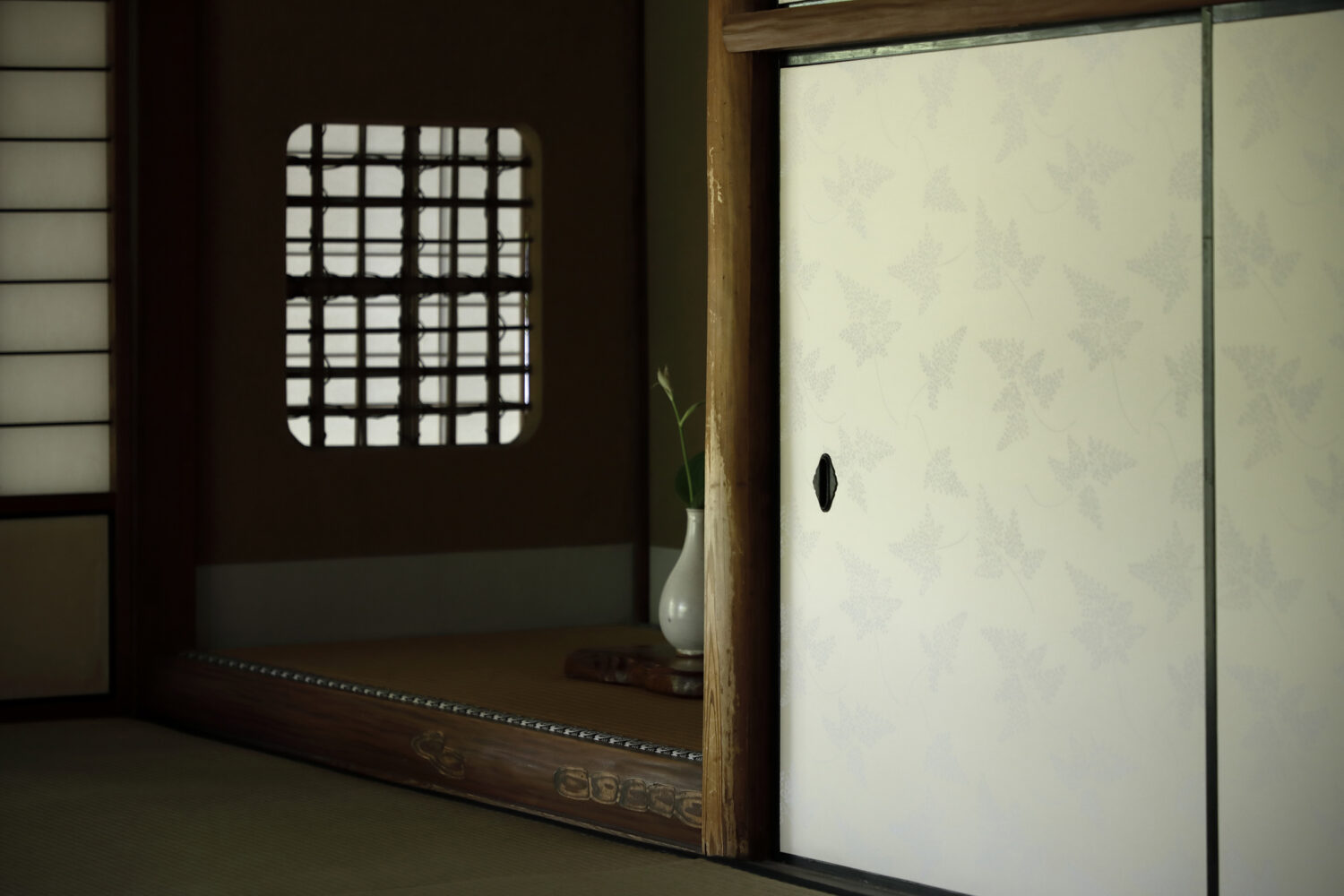
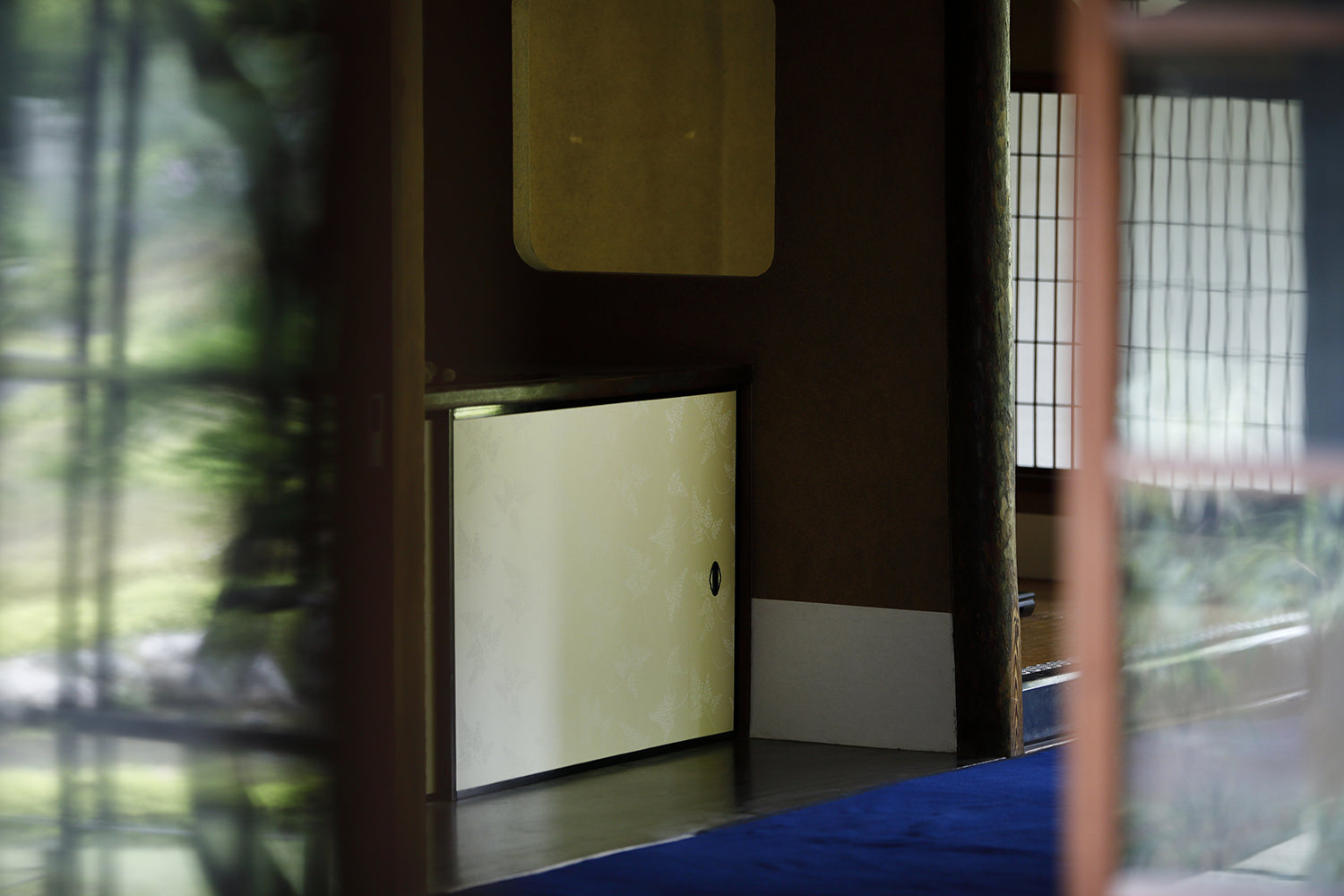
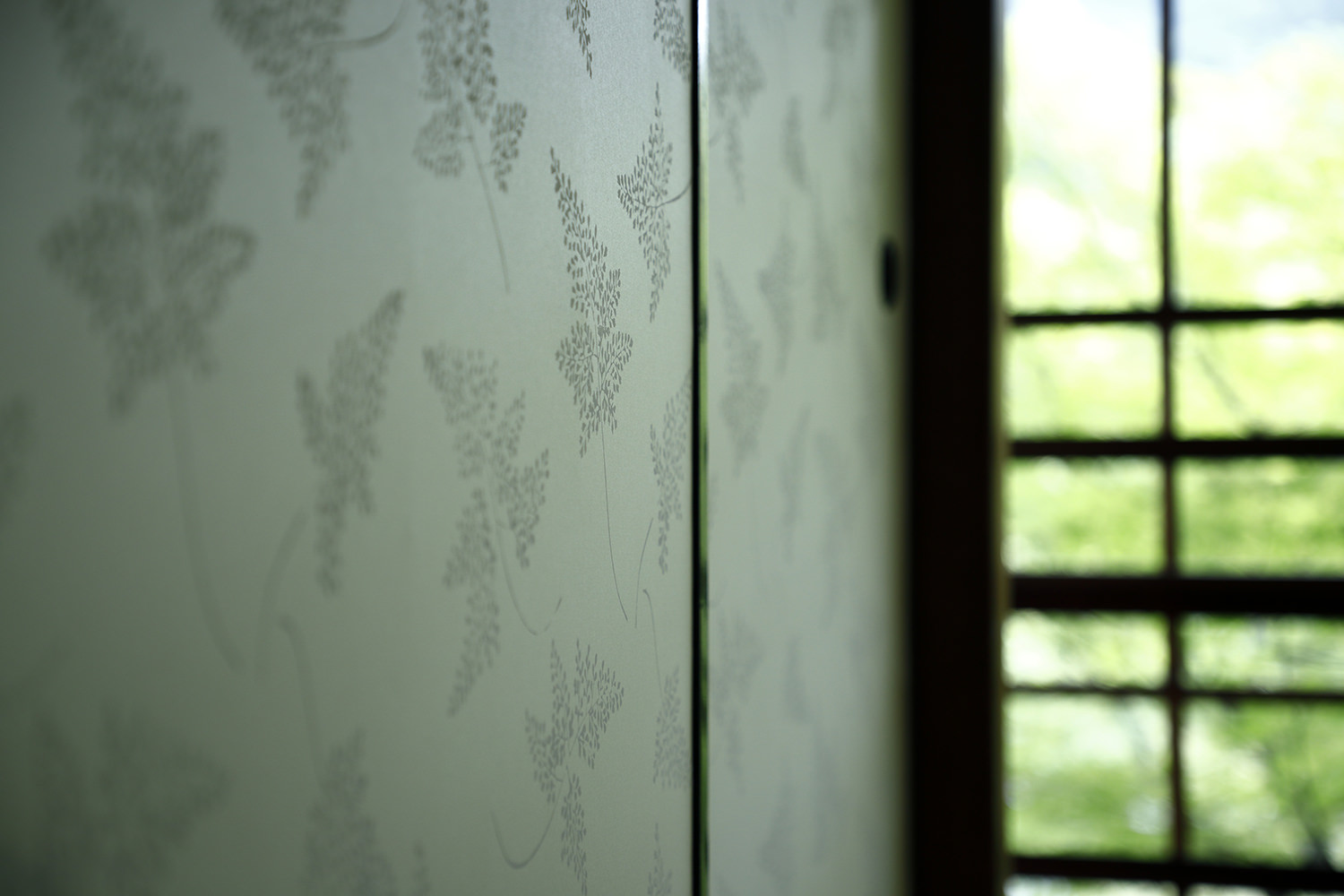
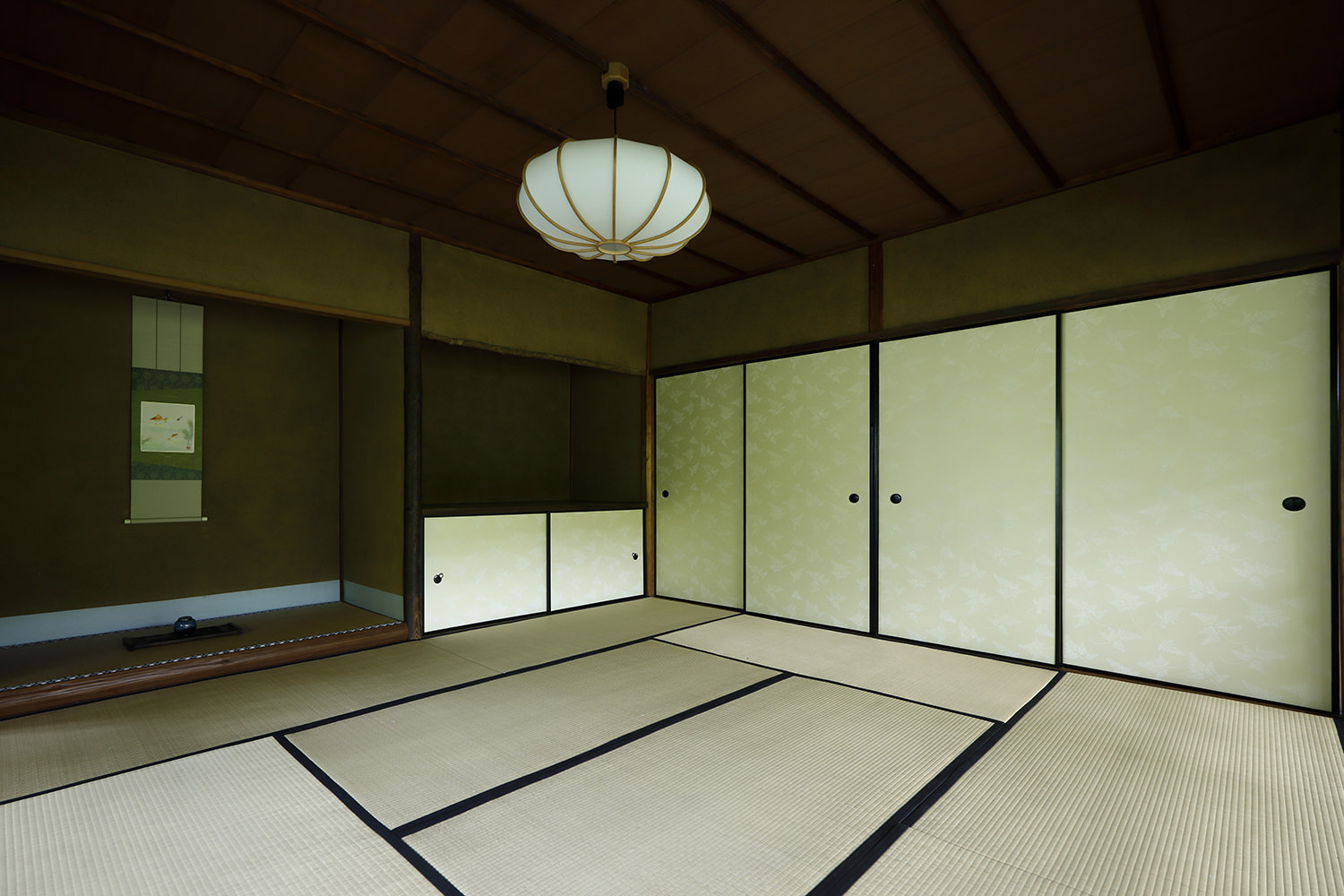
Samurai Residence Over 300 Years Old
Restoration and Renovation of the “Matsukura House”
It was a memorable job.
After all, the beauty of the karakami that was delivered led to the renovation of the entire 300-year-old house.
One day, a young woman who had inherited a 300-year-old samurai residence paid a visit to our atelier. The sliding doors of that house had karakami with a cloud-and-crane pattern that had been handed down from our ancestors, and we were able to restore the doors with the same finish as before.
The mica-printed kumotsuru (cloud and crane) karakami was housed in a space with a spear rack, which speaks to the history of the house. Karakami resides there as in days gone by, perfectly at home in the dignified space.
Incidentally, this cloud-and-crane pattern, which had existed in the Matsukura family for several hundred years, was the same karakami pattern as the one used in the Honmaru Goten Palace of Nijo Castle. The reference photo, which I took while I visited the site with Kyoto City officials, shows the sliding doors of the Honmaru Goten. Although the colors and textures are different because the photo was taken with a flashlight in the pitch dark while the building was closed for restoration, the karakami in Nijo Castle uses gold fold coloring applied to a foundation dyed in greenish-blue.
In addition to the restored karakami, other sliding doors were fitted with karakami using patterns selected in consultation with the young heiress, and Toto Blue karakami was also included in the project.
As a result, the we were able to successfully combine old and new karakami in a powerful architectural structure with a rich history of 300 years, and this space, a fusion of traditional karakami and karakami that reveals the beauty of the current era, has emerged before our eyes to create a fascinating world.
The young woman and I, who is in a position to carry on tradition and shepherd the present into the future, really hit it off, and we remain good friends to this day.
There is more to this project story.
After the karakami was delivered, the family was delighted, but the young woman’s mother decided that the surroundings did not match the dignity and beauty of the karakami, and to everyone’s surprise, she decided to renovate the room and then the entire building.
Later, under the esthetic ideals of the mother and daughter, the traditional yamato-mune (high walled structure) was repaired to be more earthquake resistant and beautifully restored as architecture employing the authentic textures of Echizen wiped lacquer and traditional Kanazawa Gunsei (ultramarine) walls, along with our karakami.
────── Karakami Artist Toto Akihiko
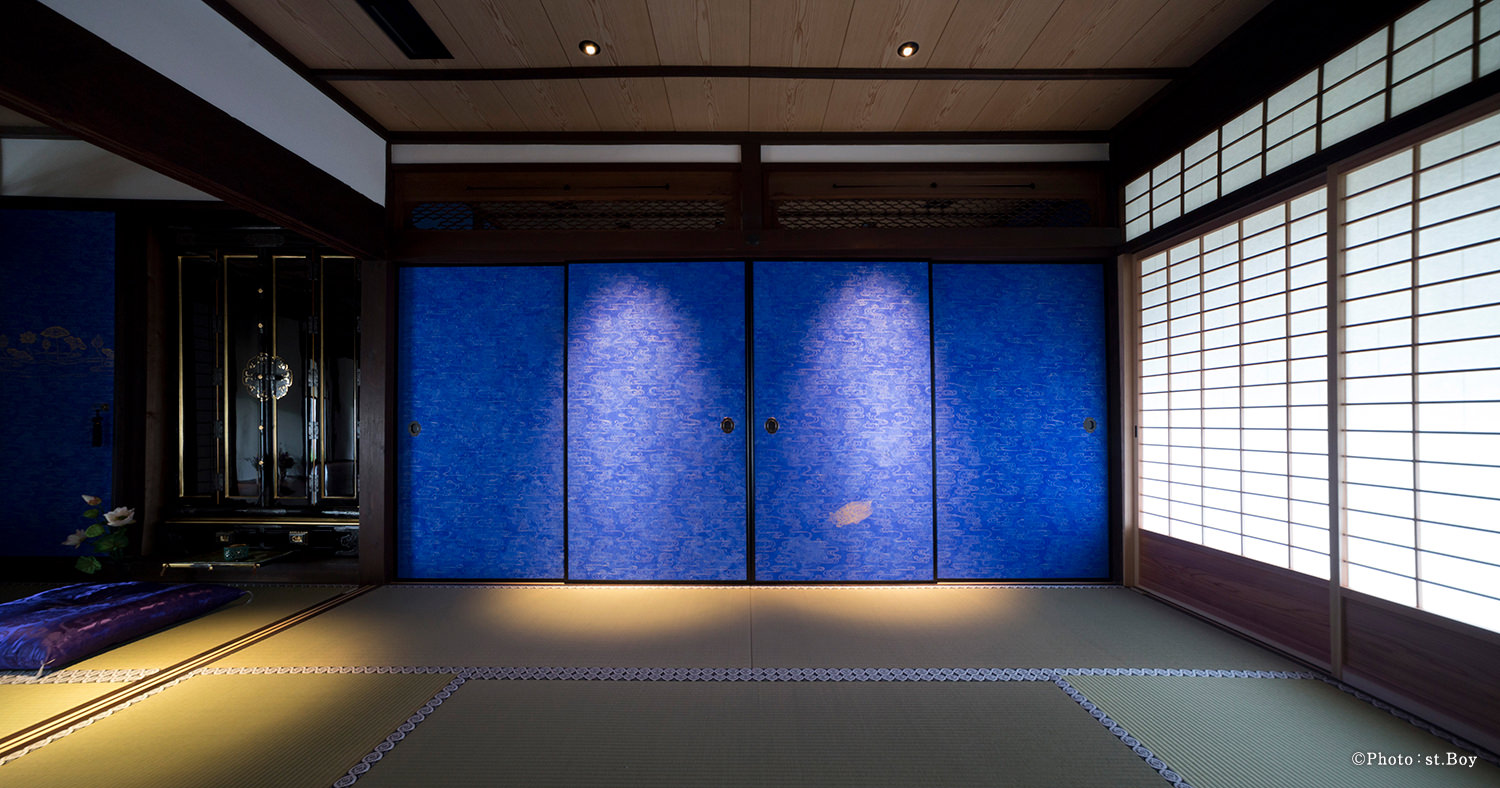
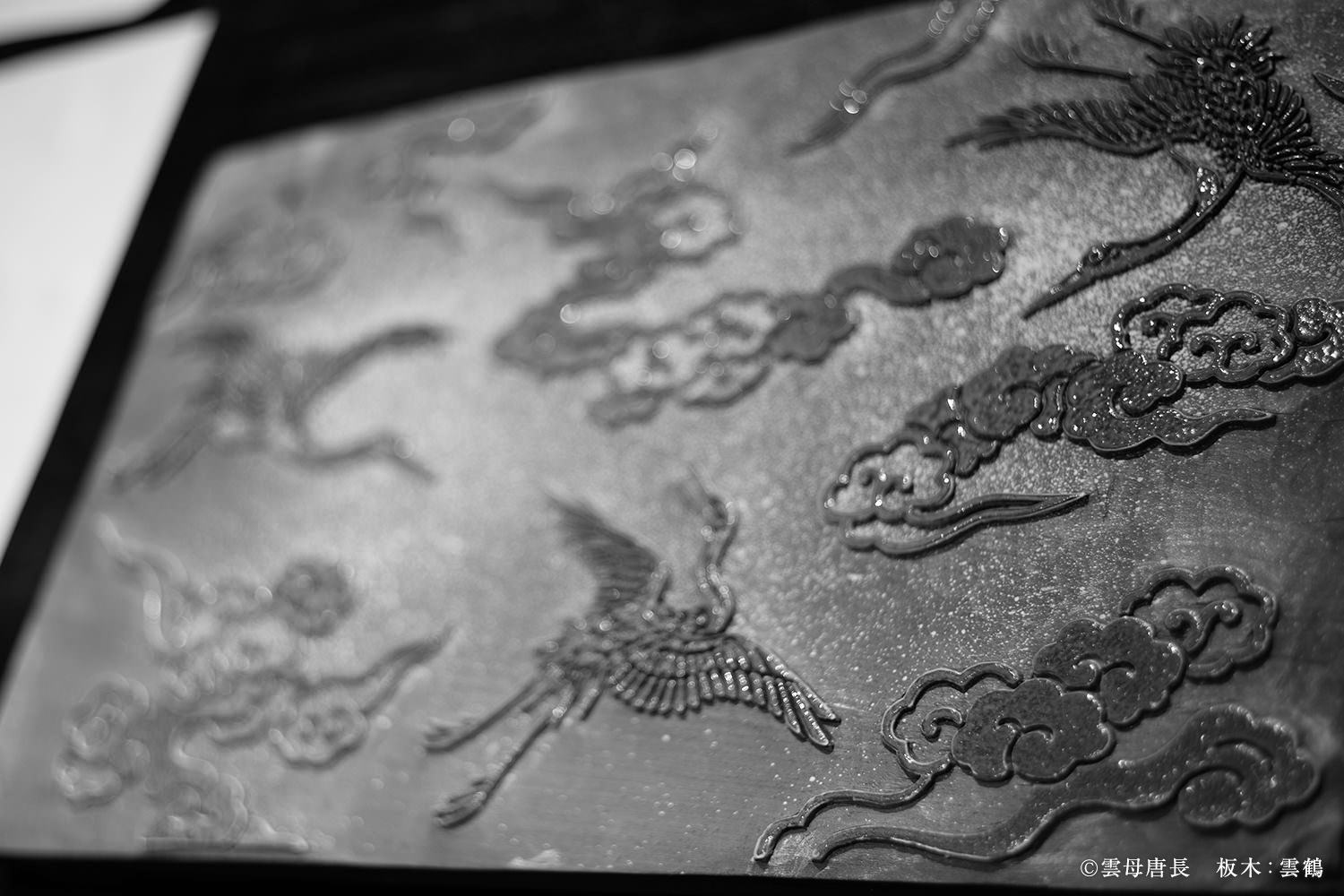
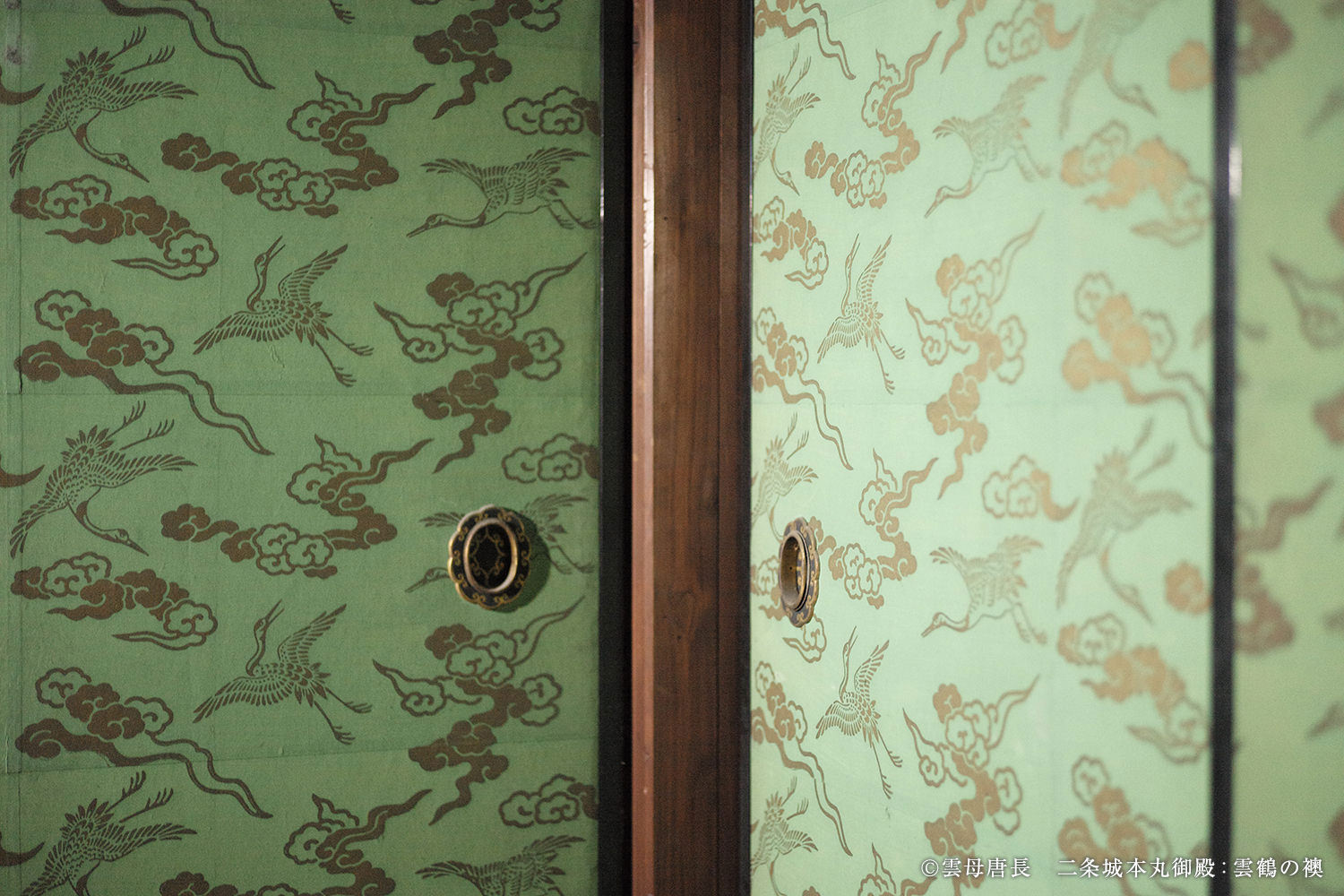
Tokyo Skytree
“Restoration of karakami on a byobu folding screen giving a full view of Edo”
2012
Began work on the restoration of karakami on a byobu folding screen givinga full view of Edo.
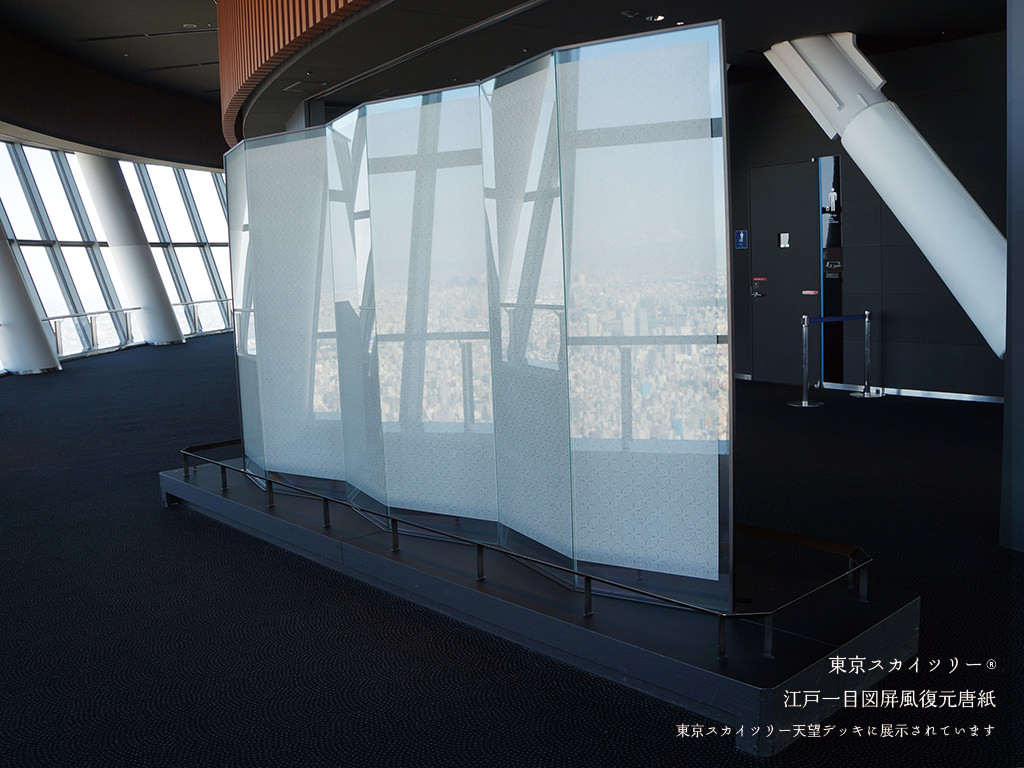
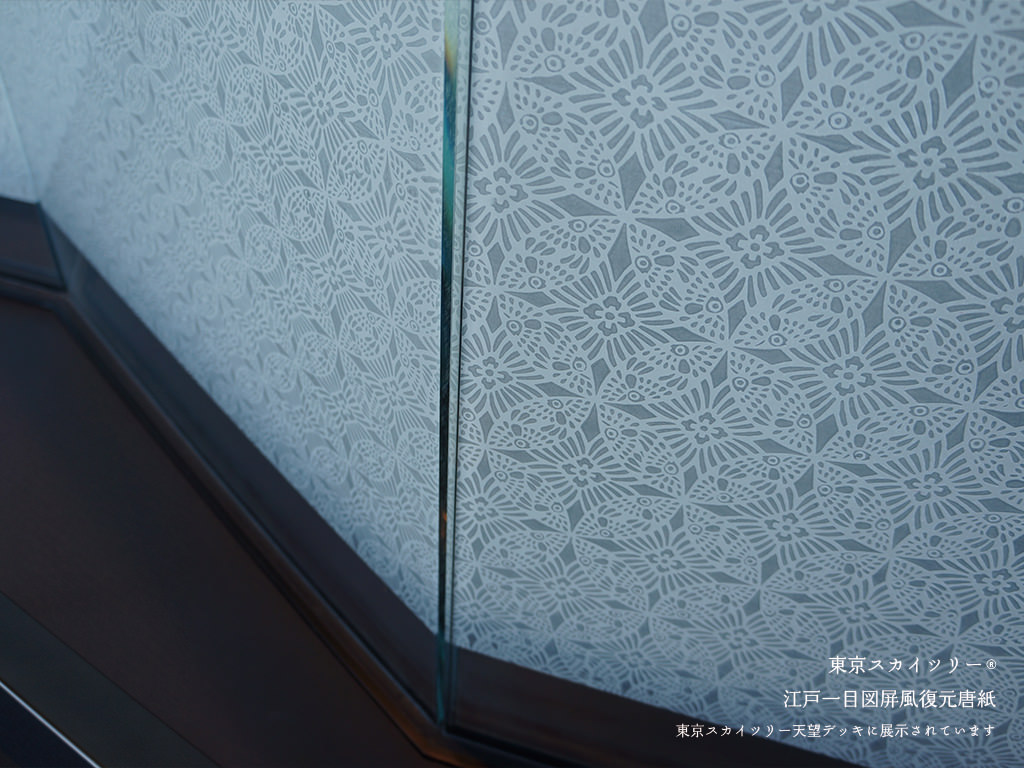
Nikin Temple, Myoshinji School of Rinzai Zen Buddhism
November 2011
Karakami produced for the inauguration commemoration ceremony of Nikin Temple of the Myoshinji School of Rinzai Zen Buddhism, the first such ceremony in 350 years.
Yogen-in and Tawaraya Sotatsu’s Important Cultural Property
Karakami Restoration of “Matsuzu (Pine)”
December 2010, December 2011
For two-and-a-half years starting in 2010, I had the opportunity to work on the restoration of Tawaraya Sotatsu’s “Matsuzu (Pine),” which is an important cultural property at Yogen-in.
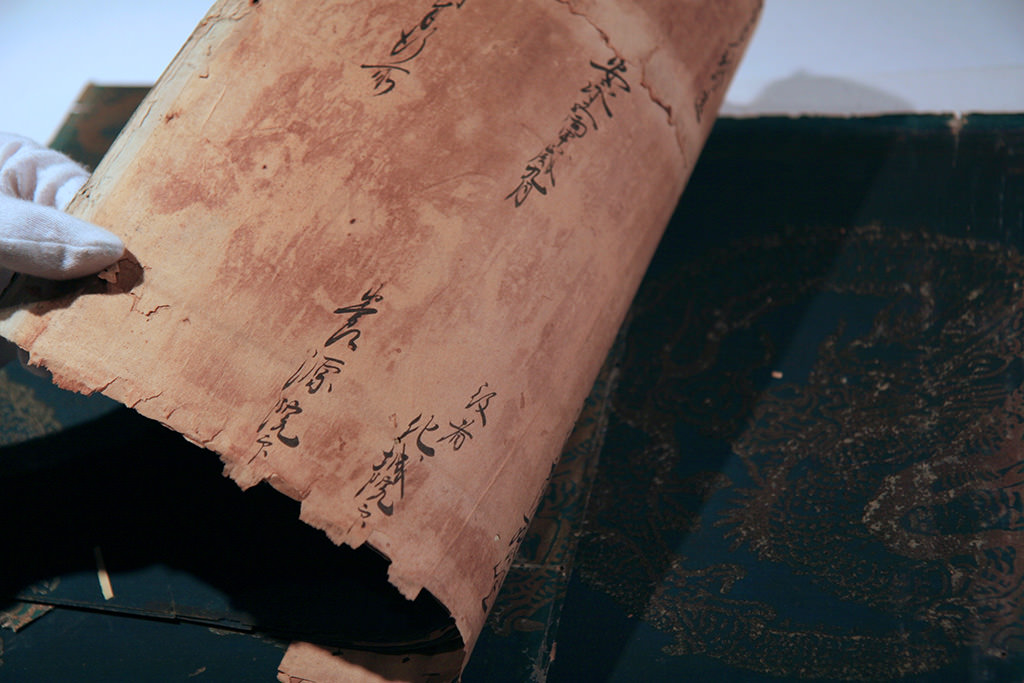
Karakami with gold ganryu (round dragons) on a greenish-blue background.
One side is a restoration of a pine tree on karakami by Tawaraya Sotatsu, and the other side is karakami of the Karacho ancestors of the Edo Period. When we were asked to restore karakami for the sliding doors of this cultural asset connected to Tawaraya Sotatsu, we consulted with the former head of Karacho (the 11th generation head) and, through a process of trial and error, created karakami in the colors of a period 100 or 200 years in the past. The room of Shoten Kangiten, which was moved from Fushimi Castle, is resplendent with this karakami. Restoring the pine tree karakami at Yogen-in was the honor of a lifetime. We must not forget that our ancestors in the Edo Period left us their legacy, and the temple has protected and passed it down to us until now, which is how this opportunity came to us in the present age.
For something to carry on, someone must actually do the work of carrying it on.
We sincerely hope that this karakami will be handed down for the next 100 or 200 years, and that it will bring peace of mind to people and watch over them.
Restoring ancestral karakami paper involves extensive dialogue supported by research and imagination, and despite the difficulties, it seemed to me quite an enjoyable task.
In time, I imagine that our descendants will take up the challenge of this dragon karakami again.
────── Karakami Artist Toto Akihiko
